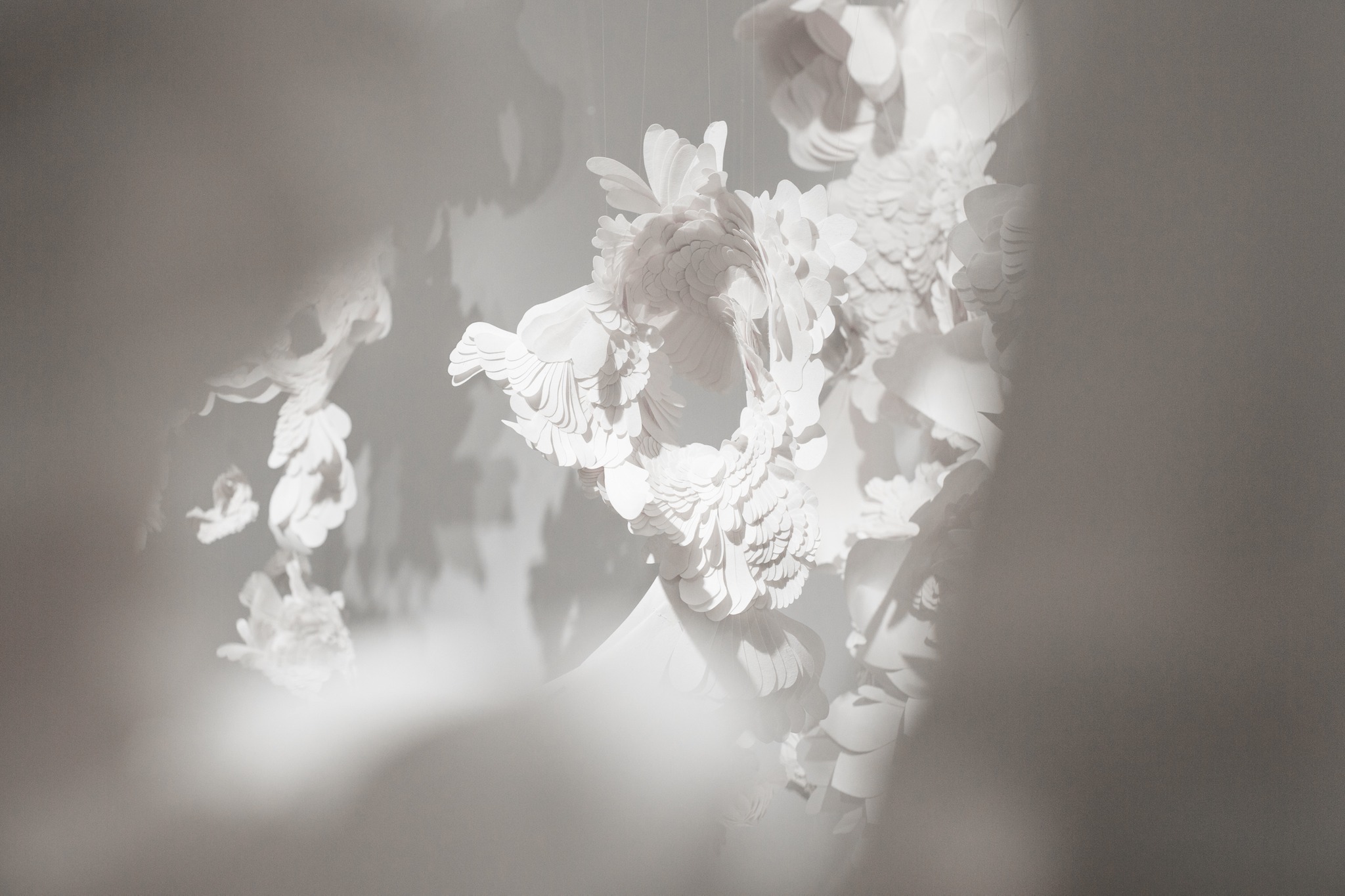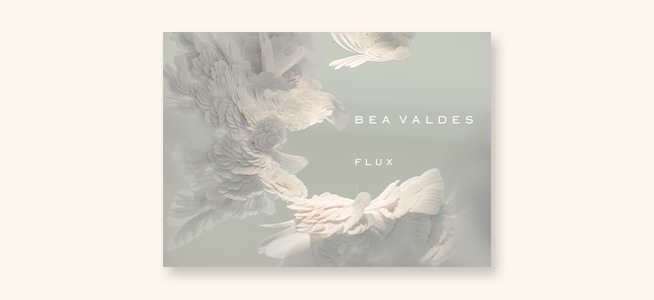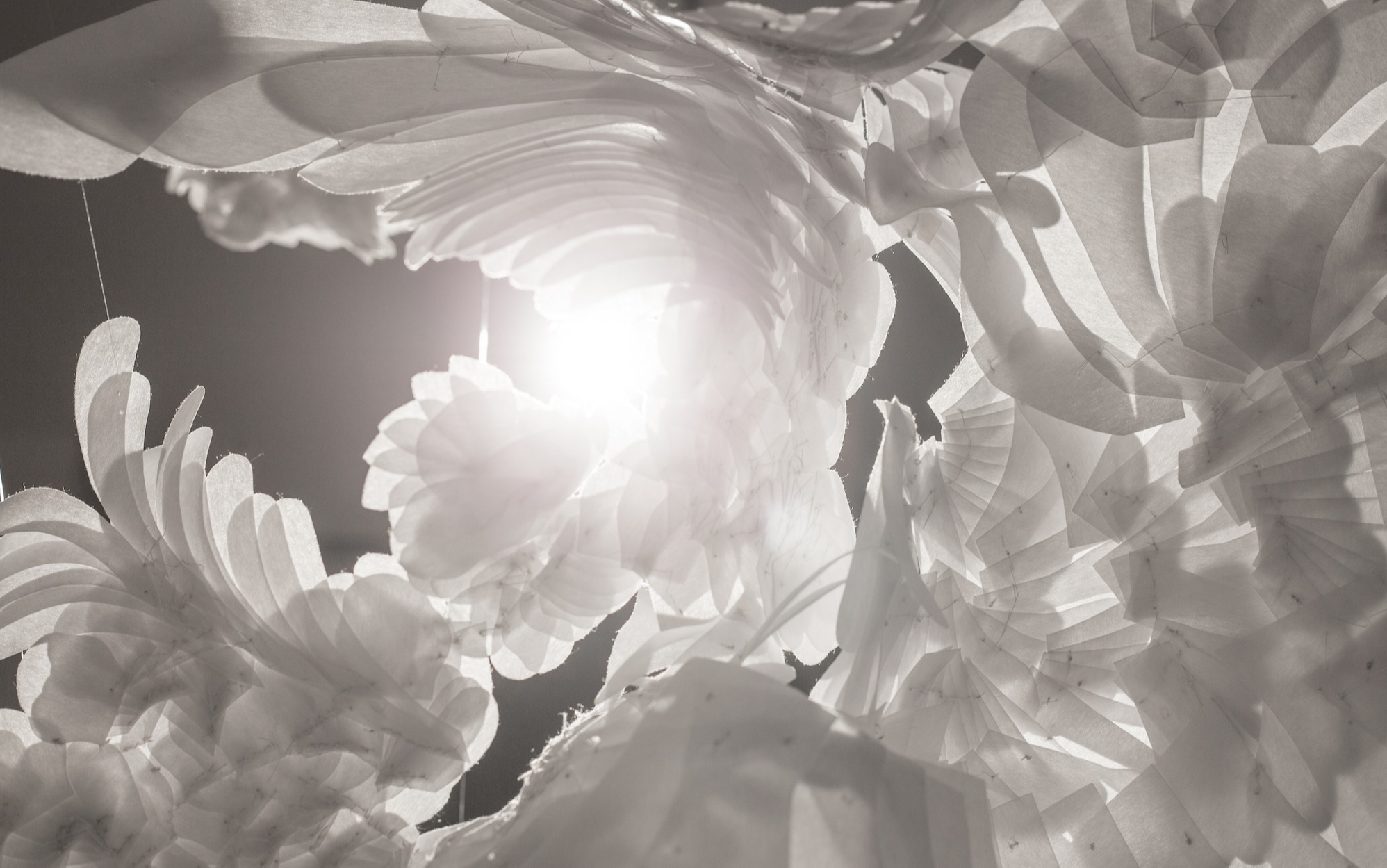
Installation Views
About
To present a reality in the moment, without classification or linear sequence.
Revealed at its most fragile point of existence, akin to sounds, before becoming words, have an elemental logic, inhabiting that threshold before the rational
Through the process of genesis and destruction, intuition stands as catalyst, critic and guide
To expose the process as it is conceived, altered and then pulled apart again.
This an invitation to walk into time– where the relationship with past, present, and future is in simultaneous play.
The environment is filled with an impulse, deconstructed and unfashioned
In this constant immersive state of flux, what remains is entirely signs and sensations
The work speaks of intuition and its suspension– how it swells in a volume of moments strung together and then torn apart and eventually altered by memory. How it weaves into time– constantly lost, recreated, rebuilt, then dissipates and always in a state of becoming.
This area of the creative continuum is what we hope to explore– An immersion in the process that is more intimate and inclusive as the audience no longer stands as a separate entity.
These pieces are an ode to the process, visible stitches of time– pathfinders in the middle of the surge.
The figures that comprise Bea Valdes’ Flux are duplicitous. From afar, they appear strong and sculptural, suspended monuments crumbling elegantly to the ground. Closer inspection betrays that perceived denseness, revealing themselves to be thin and gauze-like, evanescent clouds held together by thread and a prayer. It’s a trick of the light, clouds gaining reassuring solidity as they catch more brightness. The revelation is unexpected not because of the work itself, but because of the artist behind it.
As a world-renowned accessories designer, Valdes has spent the better part of the last 15 years cultivating a body of work obsessed with the idea of permanence, of beadwork so refined, materials so battle-tested, and hands so accomplished that they dare claim immortality. On her second solo exhibition for Silverlens Galleries, the artist pulls back the curtain and in a gesture that betrays both confidence and vulnerability, exposes the fragility of her work and process.
Valdes calls the pieces that comprise the show “carcasses.” In the workshop for her accessories business, this is the point in the process the creators live with every day—systematically cut felt in place of the beads and precious stones that eventually make up her objects d’art, pieced together with thread before the expert handiwork of the community of women that comprise her workshop. Bodies constantly changing, work that’s never finished, a process forever in flux—one is tempted to call them the raw sketches that eventually provide the blueprint to her luxurious creations but the carcasses are not quite that. Having the whole lifecycle of each piece under one roof allows for a process that isn’t linear, of simultaneous creation and destruction. The ephemera is the artist’s constant, the part of the creation that is the creator’s before anyone else’s.
Certain shapes from her career as an accessories designer subconsciously recur in Flux. These shapes form the vernacular of her studio, forms that appear in dreams, that the artist describes as almost embryonic. In certain corners of the exhibition, the figures block the light enough that shadows are cast on the wall, a kind of haunting by the predecessors of the shapes formed.
The ghosts of past works turn up in Flux. And by allowing the process to lead her not just forward but also backwards, Valdes allows herself to be truly exposed. She lets it all hang—her aesthetic inclinations, the obsessions of her subconscious, the inescapable force of habit. She braves exposing her limitations—that as inventive and peerless as her design work has been, there are certain patterns she cannot escape from. Repetition allows for her fabled consistency but in Flux, it allows for the vulnerability of admission, a confession.
Flux is a meditation on the ephemera of things, a concession to mortality— that while the well-made pieces that come out of her workshop have a chance at eternity, the hands that create them don’t. It’s the ultimate subsuming of ego, of an artist admitting defeat to her own process. The artist has never been more exposed than in Flux. But in confession, the artist has also never been more present.
In the same way that her fabled fashion objects are collected, Flux is meant to be acquired—it is, after all, presented in the context of an art gallery. But there’s a crucial difference between the fine jewelry and embroidered handbags that her workshop produces and the works here. The part that is the creator’s before anyone else’s—in Flux, the artist allows herself to be emancipated from the parameters and hurdles that she so elegantly jumps as a designer. Early in the conceptualization of the exhibition, Valdes decided to let the work exist outside the frame, to let the work escape definition or an expression of finality. It’s as close as her public is going to get to understanding Bea Valdes at work, not the public face that greets them after the fact of work, but the flesh-and-blood human who sits on the floor of her workshop, staring at the stitched-together pieces of felt in the air and wondering where they’re going. In other words, the artist’s mind mid leap.
As an accessories designer, Bea Valdes is immersed in an industry forever in pursuit of buzz, perennially on the bound to capture beauty, going from creator to creator in pursuit of louder and louder noise. Valdes long ago found that quiet work would be the clearest path to self-preservation, of protecting the purity of process from an industry tormented by velocity, of having a community of enormously skilled women both as instrument and cocoon. In that way, Flux is a sound not a song. Not notes on a scale but vibrations traveling through the air. The work goes on.
Words by Raymond Ang
Bea Valdes was born on August 30, 1973 and grew up in Manila, Philippines. Coming from a family which had been in the fine jewelry trade for three generations, she was fascinated with embellishments from a young age.
Today, she is a recognized and much celebrated accessories designer who continues to take inspiration from various cultures and countries, sourcing materials, patterns and ideas from around the world. While Bea receives global recognition and respect for her distinctive hand embroideries, she remains in the Philippines, working with modern local artisans and perfecting her craft at her Manila-based studio. She chooses Manila over New York as it is important to maintain a creative environment that allows for the time-intensive hand embroidery work to be carried out. The bags, belts and jewelry can take up to ten weeks to be made.
Bea maintains her focus on traditional embroidery and continues to support local artisans and their craftsmanship. In her words, "In a factory you just do a piece of something, you don't get to own the whole. In our atelier -my girls take a lot of pride in their work. Everything is created in-house, from concept, to design, to production. Everything is proudly made in the Philippines.”
Works


